Doom Game Review
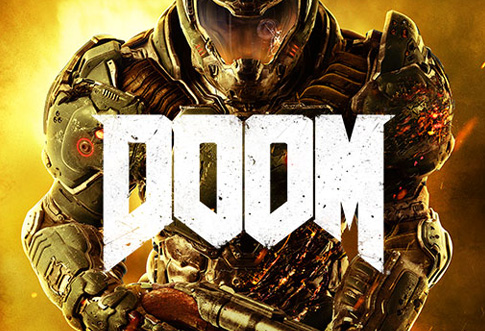
The most exhilarating and best FPS of the year.
Multiplayer is endlessly playable, clever, savage fun and lot of excitement.
SnapMap is strong and reachable, and could cause excellent content for years.
The effort’s opening hour holds back Doom’s actual extent and quality.
Because this a game so great that you simply won't need it to finish, and so it'd be extremely quite perfect if its last present was to ensure that it never truly does.
About The Game
Doom’s first few missions deliver just what most of us expected. Quick, ferocious, movement-driven, close-range battle, running through an A to B level structure entwining multiple branching paths and twisting amounts of verticality. Every weapon in the game – a pistol, shotgun, and a Doomguy. A fountain of zombies, Imps, and plasma screen-throwing heavies are excellent. It’s interesting, prompt, and ungodly smooth.
You’ll get into fresh surroundings, the map will burst out in every way at exactly the same time, and Doom will actually begin to reveal what it’s all about. Because that vast, omnidirectional, deeply nuanced design before you is a playable metaphor for everything Doom is.
It’s a game that comprehends the raw essence of the first-person shooter on a primary level and presents it in every new manner it can through every minute and style. It provides, it investigates, and it never, ever stops.
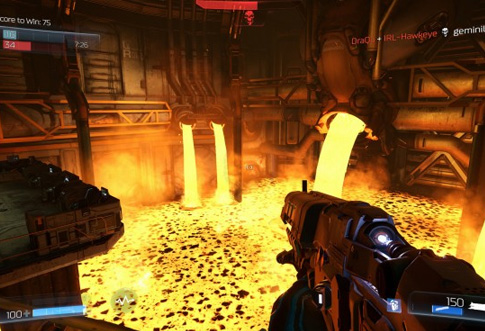
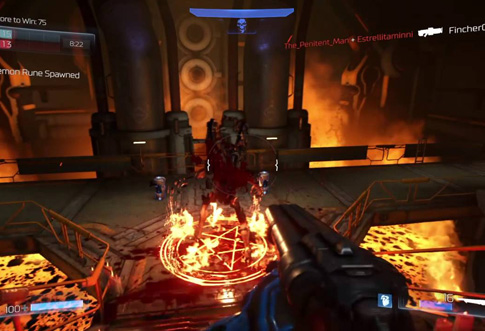
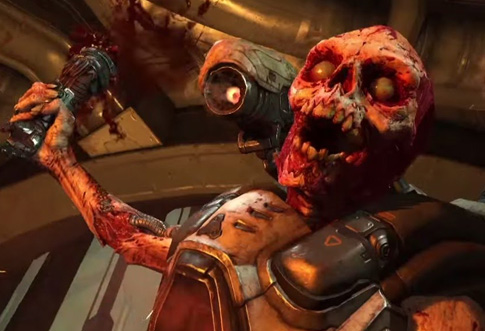
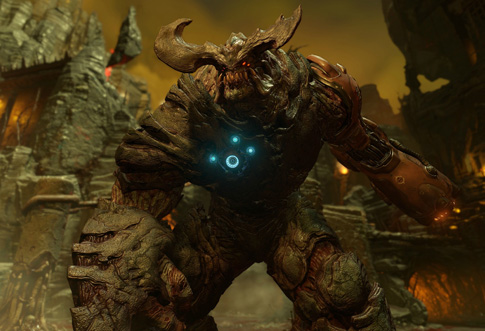
Game Features
Its core battle is near-perfect. Every fight in Doom is a large pulsating, shifting, transforming and reshaping. And all of it occurs in direct, unmistakable answer to you personally, acting, interacting and responding at the center of it. Doom understands you’re there, and it never stops to allow you to understand it.
Everyone is strong and even all the enemies. But you are stronger if you push yourself. In Doom, the difference between fleet, bloody defeat and a rejoicing, resonant mastery of the battlefield is a just resolution, and a readiness to catch the fight by the throat and run it into a wall. You push, you win, you learn, you grow, and Doom keeps giving you more to work with. It’s testament to the pitch-perfect launch of new enemies and chances that each hour or so you’ll find the creature you once viewed as a horrifying manager now controls your ideas no more than the once-significant ex you believed you’d never get over, but then did.
Doom gameplay doesn’t allow you to regenerate your hp or health. It gives you something better. The skill and responsibility to handle your own survival in game. Health packs and armor pickups are scattered all over, but the actual game with which you’ll keep yourself comes, as everything else does, through your own activities. The Glory Kill system – which provides instant well-being boosts in wages for viciously meeting melee kills once you’ve softened up an enemy – is a marvellous bit of design, ensuring marathon runs against apparently hopeless assaults as a long as you keep staunch environmental consciousness and a continuously alert skill to balance the need to kill any specified devil against how useful it may be as a resource down the road.
Likewise, the chainsaw isn’t any longer a melee weapon, but a tool. It’s going to kill almost any creature you use it to so long as you keep it topped up with enough fuel – larger quarry needs more reservations – and will spill courage and an enormous blast of ammo from every creature rip open. The actions of going and killing – and in Doom’s frenzied, kinetic warzone the two are inseparable – are essential, but in addition they must be shaped and managed around a blade-sharp consciousness of chance and survival.
The fight shotgun starts out as a close-range dueling weapon, perfect for participating in a circle-strafing waltz of departure with a jumping, jump Knight, but mod it outside with a grenade launcher, and unexpectedly it’s also something for keeping the moderate-range breathing room needed to focus on that dancing because of its duration. The plasma rifle begins as a adequate, rapid fire crowd control tool, but add an area of effect stun shot, and you’ve got a means of delaying the constant assault of Hell’s larger warriors for the few, fortunate seconds you must clear some space and mount a counteroffensive. The rocket launcher becomes a manual detonation tool for setting tactical explosions everywhere you wish.
But the effort, as towering an accomplishment as it’s, is only one part. Doom’s multiplayer, which joins the effort’s cozy ferocity with Quake’s rapid, high flying aerial component, is as reachable and compulsive. It’s a leveling system, but its weapon unlocks are complete within several hours, in truth merely in spot to drip-feed the possibility of wildly different weapon strategies without over-confronting the player. At heart, this is a multiplayer style that exists to be played, and there’s lots to play with.
As exciting as the firearms – which bring in the campaign roll and a few more – are to use against others, each has particular goals and weaknesses, meaning that actual power comes from a mix of complementary load-outs and private play-fashion. Tinkering and experimenting with new combined weapons and gear systems constantly reworks how the game plays in interesting and exciting ways, and there’s no such thing as a correct response except for the one which provides you with the most pleasure and success.
While Doom smoothes off the conventional stadium shot’s less inviting borders – load-outs mean the camping of weapon spawn points is not a fast route to dominance – it keeps its tactical nature living in other, friendlier manners. The timed fall of the Demon Rune enables the rapid-acting to efficiently become a manager unit for a small time, rampaging about in atrocious kind and inciting frenzied, concentrated conflicts of survival and map control. Small-ammo power weapons which include the Gauss Cannon and the chainsaw can only just be got through timed spawns, and tactical accrual can quickly nullify a devil or amplify its reign of terror to horrifying levels, depending on who holds them.
It doesn’t finish there, either. Actually in a way, it just begins. Because Doom’s closing – and perhaps most grand – investigation comes with SnapMap, a user-created content package that means to do for modern, games console-dominated FPS what modding did for Doom ‘93 on the PC. Way (way) beyond a level editor, it permits the adjustment and exploitation of everything from AI behaviour, to occasion scripting, to light and ambient sound design, to rule-sets, wins states, and environmental challenges. It’s a strong proposition and an initially complicated one too, but all of its versatility is expressed through simple to understand, visual sense chains, which could be tweaked and physically controlled as you potter around your degrees in first person.
It’s as close to drag and drop game design as is possible in a system so heavy, but any staying bullying built-in to that depth is rapidly reduced by the divine Breeze Puzzle tutorial attribute. Here, SnapMap drops you into some rooms and gives you an hopeless gameplay job in each. You might need to kill five enemies concurrently, without inflicting any nonlethal damage. Or after, requested to activate a flooring-switch you can’t reach, or catch an item floating high above a deadly pit of gasoline that can’t be bound. You’ll finish these challenges by playing them, but first, you’ll have to efficiently code the right path out of them, altering the rules and systems at play so that you can create workable gameplay or smart cheats.
As, hopefully, will many others. Excellent maps, stages, and brand new game styles happen to be coming from the community, meaning that SnapMap might simply continue Doom’s own assignment of FPS quest, long after we’ve all completed its effort. Because this a game so great that you simply won’t need it to finish, and so it’d be extremely quite perfect if its last present was to ensure that it never truly does.
Game Trailer
In order to have more insight into this game, you can watch this video from the following link:
You can visit the website of the Doom game review to understand the game more.


























































































































































